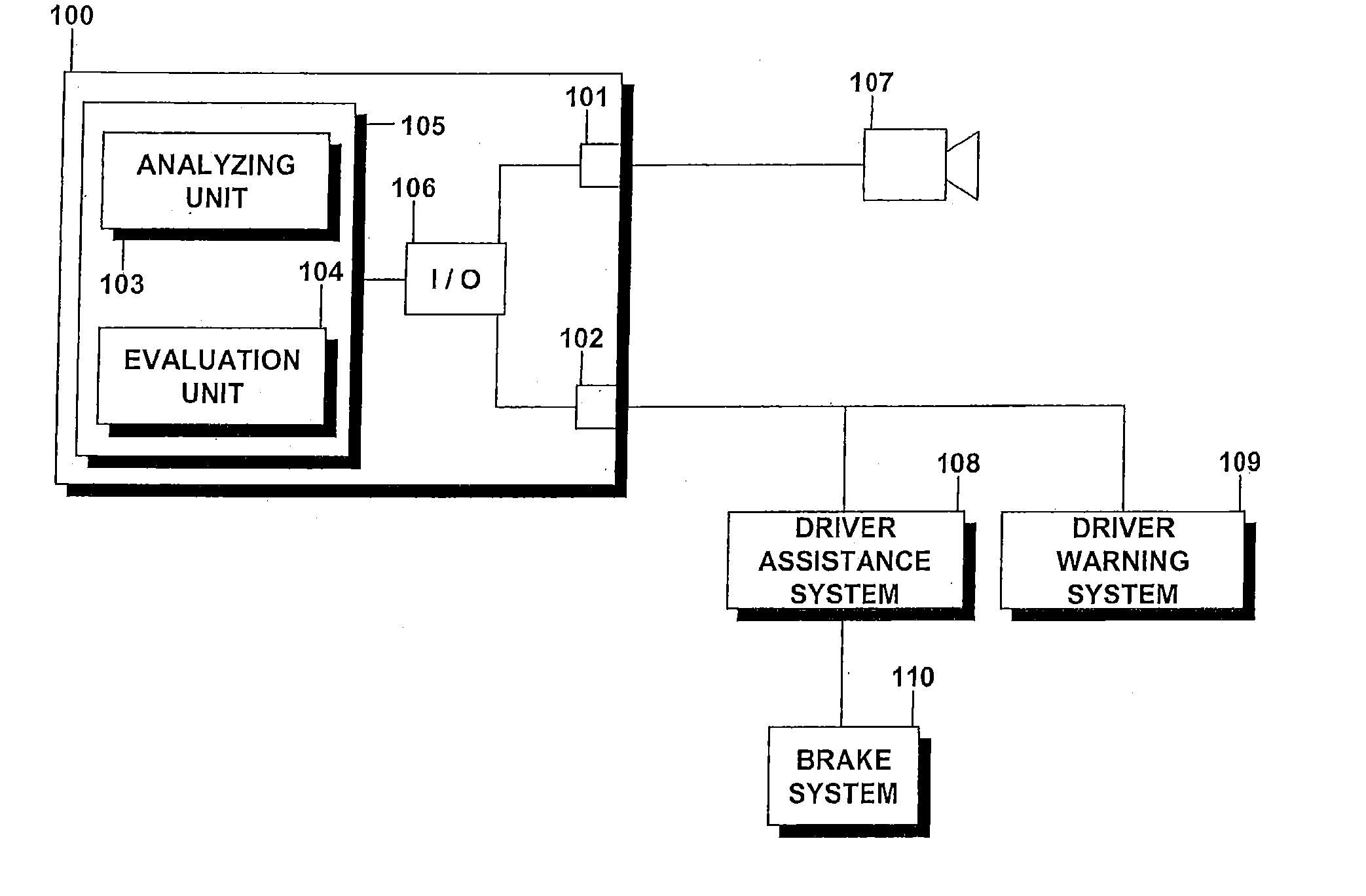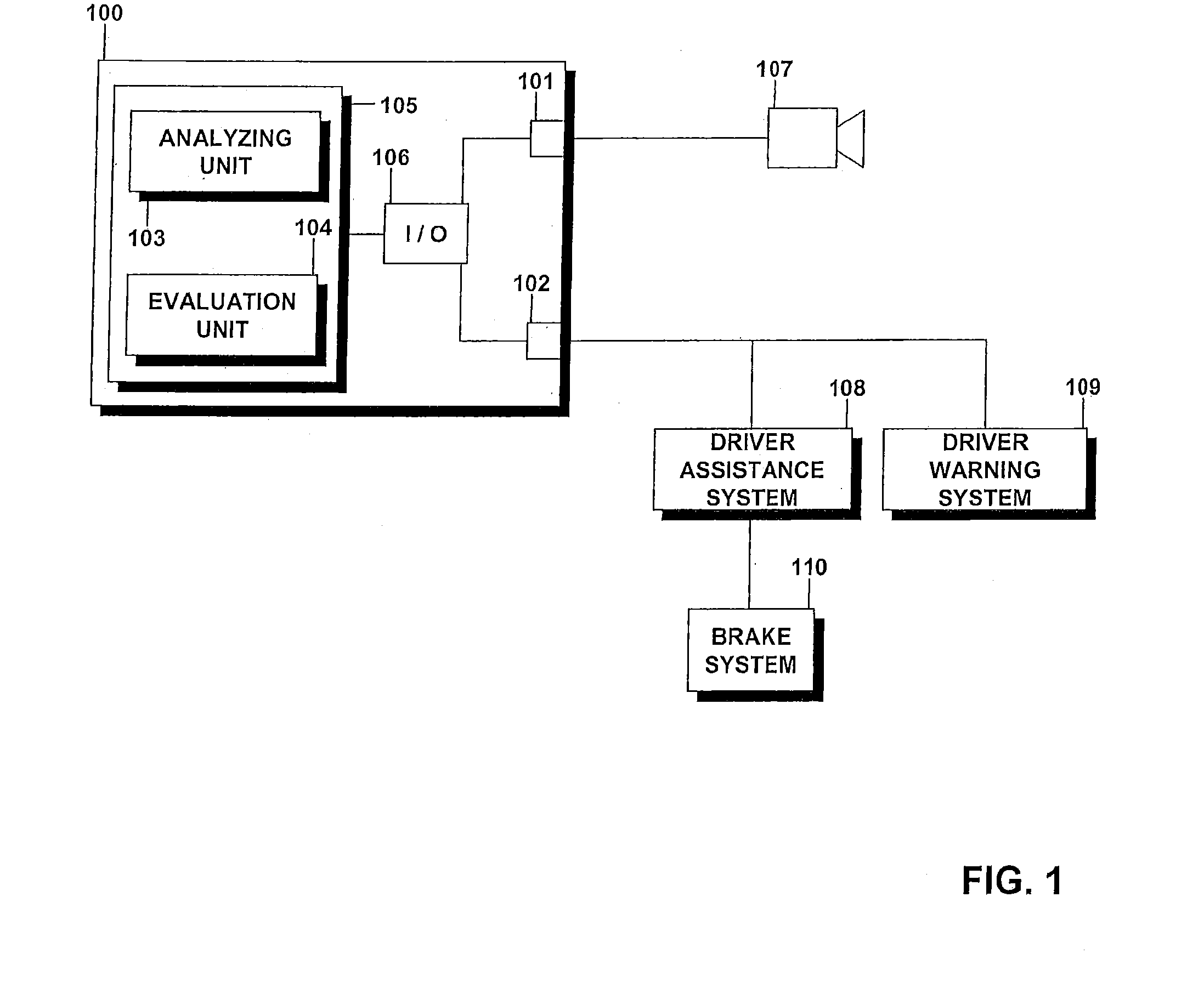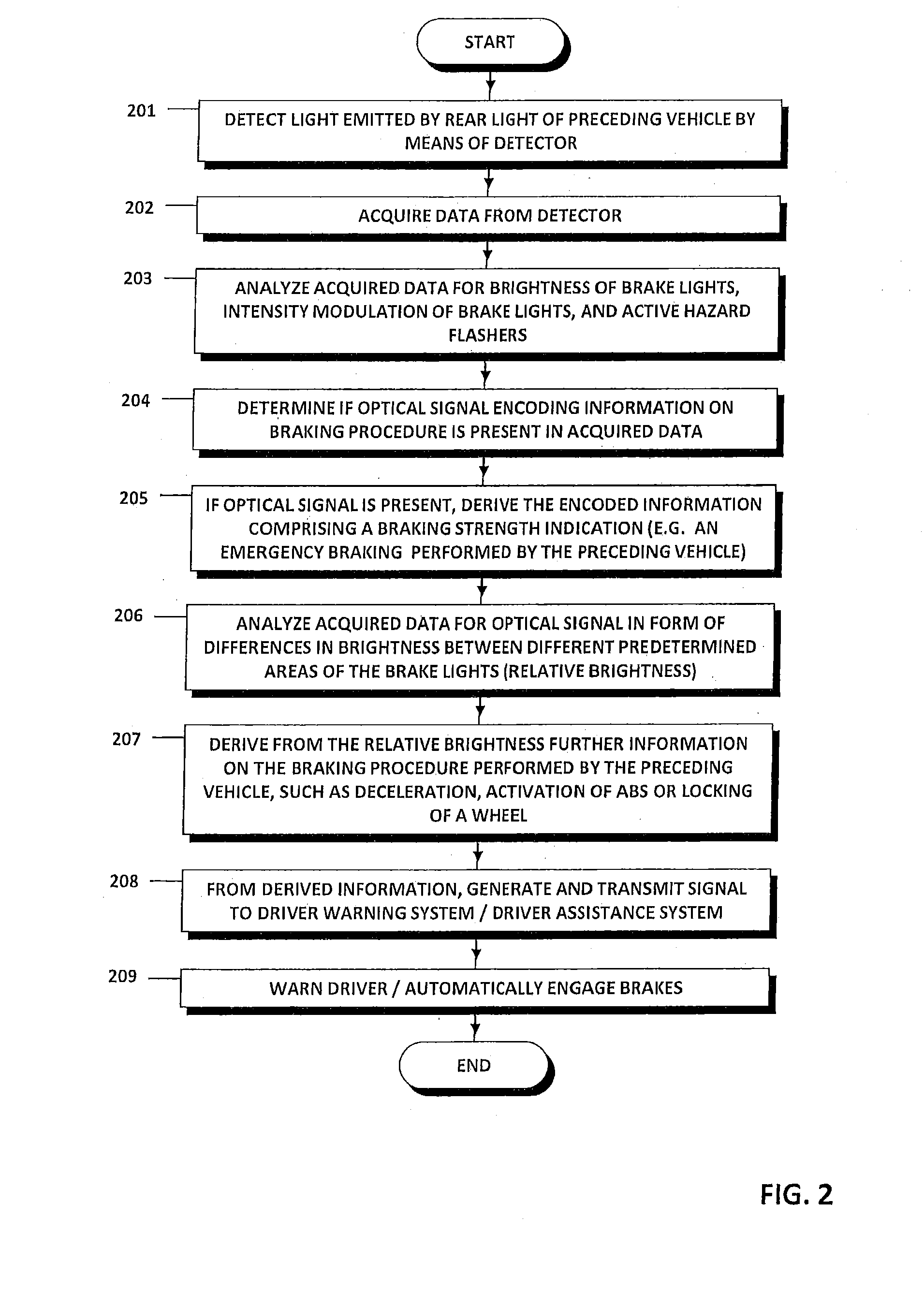System for vehicle braking detection
- Summary
- Abstract
- Description
- Claims
- Application Information
AI Technical Summary
Benefits of technology
Problems solved by technology
Method used
Image
Examples
Embodiment Construction
[0040]FIG. 1 schematically illustrates the components of an example system for vehicle braking detection that includes a device 100 for detecting braking of a vehicle. The device 100 is mounted to a vehicle which may be equipped with a driver assistance system 108. Device 100 may be part of the driver assistance system 108, yet it may also be independent of the driver assistance system 108. In other examples, the driver assistance system 108 may be omitted. Device 100 includes an interface 101 in communication with a detector 107.
[0041]Detector 107 is mounted to the vehicle such that it detects light coming from a region in front of the vehicle. Detector 107 can thus detect light which is emitted by a light source, such as the rear lights of a vehicle travelling in front of the vehicle upon which device 100 is mounted. Detector 100 can for example detect light emitted by light sources such as brake lights, hazard flashers, tail lights and the like. Several implementations of detecto...
PUM
 Login to View More
Login to View More Abstract
Description
Claims
Application Information
 Login to View More
Login to View More - R&D
- Intellectual Property
- Life Sciences
- Materials
- Tech Scout
- Unparalleled Data Quality
- Higher Quality Content
- 60% Fewer Hallucinations
Browse by: Latest US Patents, China's latest patents, Technical Efficacy Thesaurus, Application Domain, Technology Topic, Popular Technical Reports.
© 2025 PatSnap. All rights reserved.Legal|Privacy policy|Modern Slavery Act Transparency Statement|Sitemap|About US| Contact US: help@patsnap.com



